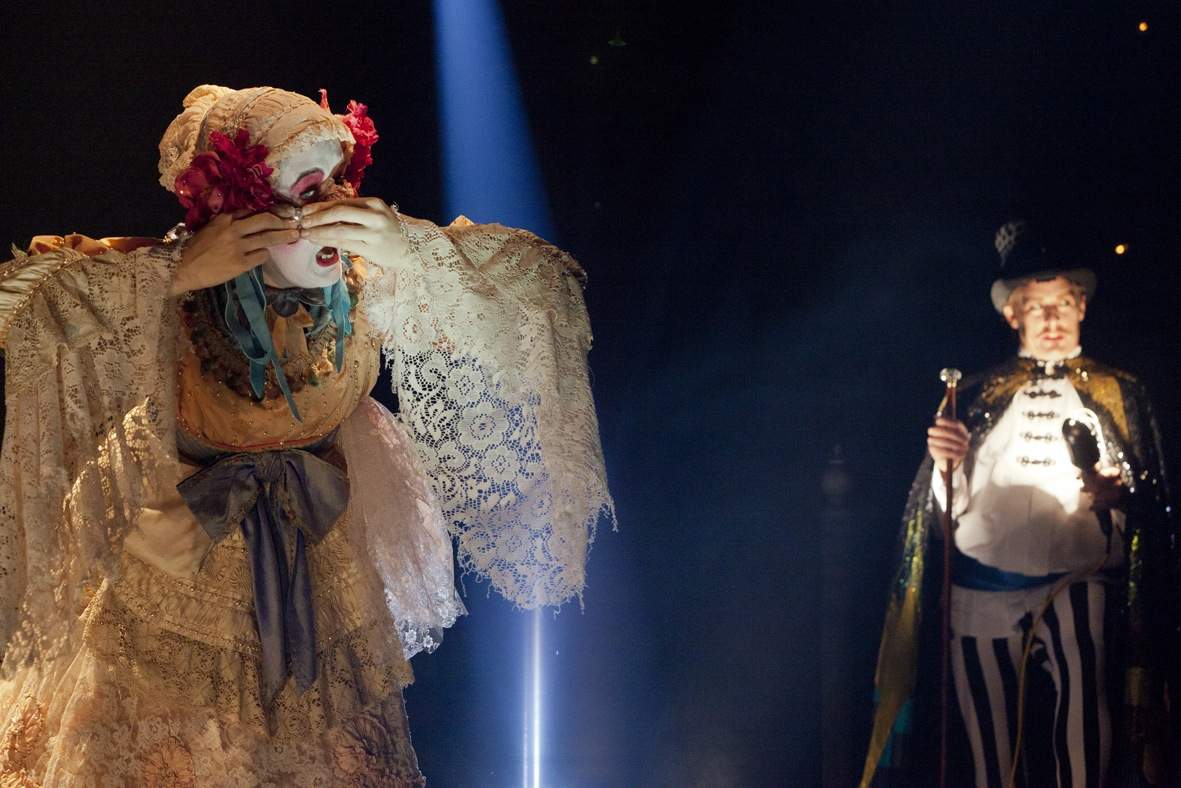Edward Gant’s Amazing Feats of Loneliness
Dressed by Romance War Born, Edward Gant's ensemble tell stories sweetly tragic and slightly grotesque.
Overview
Edward Gant's Amazing Feats of Loneliness is about two things: the ability of even small forays into art to remind us of beauty where at first glance there is only ugliness, and costumes.
Edward Gant himself is a "prodigy, soldier, traveller, poet, but always a showman", and also something of an alter ago for writer Anthony Neilson (The Wonderful World of Dissocia). Like Neilson, he's found salvation from despair in rounding up strange, surreal, sweetly tragic and slightly grotesque stories for display in what is at one point dubbed his "unintelligible travelling vanity project". Gant (Paul Bishop) just does it in a green-sequined cape and with a charm reminiscent of Michael Sheen spliced with a bit of Betelgeuse (that is, a lot of charm).
His three actors (played by Lindsay Farris, Bryan Probets and Emily Tomlins) present their collection of tales of ostracised Sanzonetta, who's physical disfigurement holds the key to riches, love, freedom and social capital; of heartbroken Edgar, who scales the Himalayas to get his absent lover's face erased from his memory (years and questionable technologies ahead of Eterntal Sunshine) on a skew-whiff, decagonal stage above which dangles the world, in paper lantern form.
The costumes, meanwhile, are by Romance Was Born, who have clearly embraced the opportunity to design for a dreamy narrative with no attached commercial imperative to translate it to ready-to-wear. Their confections include an endlessly layered, peaches-and-cream lace frock crowned with sculptural, bougainvillea-like headgear; a beard of differently sized pearls; a pith helmet and pastel regalia; and a dress built entirely of jammy sponge rolls. Their signature patchwork and pomp is perfectly at home in Gant's arena, and the aesthetic is matched in the tricked-out set (Renee Mulder) and dramatic lighting (Damien Cooper).
Eventually, a tear emerges in the high-fashion fabric of the Amazing Feats, infighting dooms the show's future, and it all gets a bit meta. As the play implodes, the characters enact debates about the purpose of theatre and the value of whimsy versus realism that one imagines torment Neilson around the clock. The love-it-or-hate-it turn of events at least brings extra meaning and fun. It's not a masterpiece and doesn't pretend to be, but Edward Gant is a bit of a treasure.





